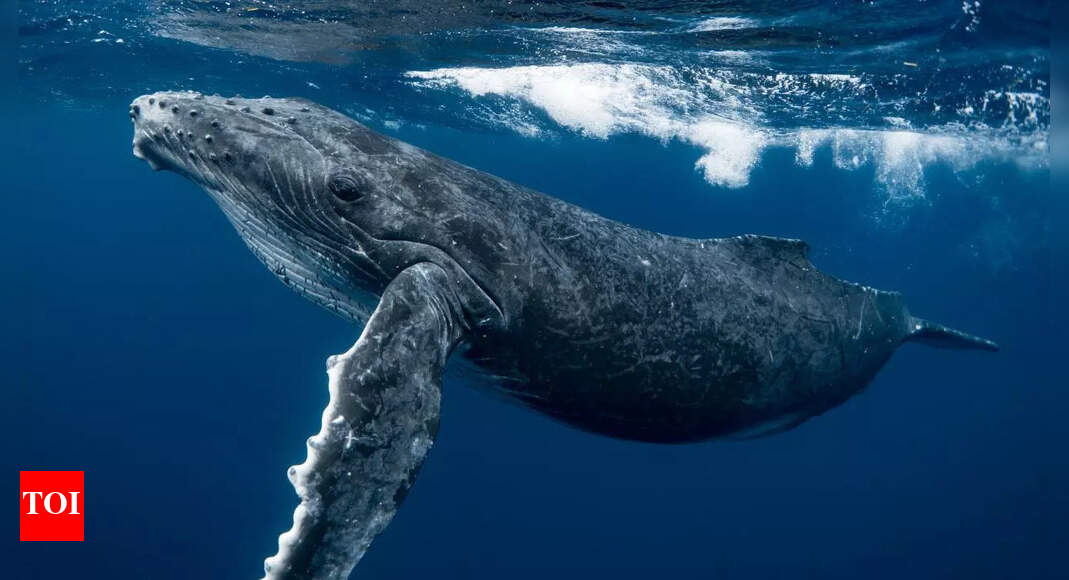In a groundbreaking discovery, scientists from Monash University and Museums Victoria have unearthed a 26-million-year-old whale skull at Jan Juc Beach in Victoria, Australia. The fossil belongs to a newly identified species, Janjucetus dullardi, a small but fierce predator from the Oligocene epoch. According to the research published on Tuesday, August 12, 2025 in the Zoological Journal of the Linnean Society, the whale specimen (Janjucetus dullardi) represents a juvenile or subadult individual, estimated to be about 7 feet (2.1 meters) in length. Unlike modern baleen whales that filter-feed, Janjucetus had sharp teeth and large eyes, indicating it actively hunted prey like fish and squid.The fossil is exceptionally well-preserved, including the skull, ear bones, and teeth, rare features that offer vital insights into whale evolution. This species represents a key stage between land-dwelling ancestors and fully aquatic whales, helping scientists understand how early whales adapted to life in the ocean. The discovery not only sheds light on the evolutionary shift from toothed predators to filter feeders, but also provides a rare glimpse into ancient marine ecosystems. It highlights southern Australia’s importance in understanding the rich history of life in prehistoric oceans.
How the whale skull fossil was discovered
Scientists have revealed a 26-million-year-old whale skull fossil found in 2019 by fossil enthusiast Ross Dullard at Jan Juc Beach, Victoria, Australia. The fossil, embedded in ancient marine sediments, belongs to a newly identified species named Janjucetus dullardi, a small but fierce predator from the Oligocene epoch. Unlike modern baleen whales that filter-feed, Janjucetus had sharp teeth and large eyes, indicating it actively hunted prey such as fish and squid. Measuring just 2–3 meters in length, it was much smaller than today’s whales but well-adapted for predation in the warm, subtropical seas of its time.The fossil’s exceptional preservation, including parts of the skull, teeth, and ear bones, offers paleontologists an unprecedented look into early whale anatomy. Detailed examination of its jaw structure, sensory organs, and hearing system provides valuable insight into the evolutionary transition from land-dwelling mammals to fully aquatic whales. This discovery significantly advances our understanding of whale evolution and ancient marine ecosystems.
What the whale skull fossil reveals about anatomy
In a groundbreaking discovery, scientists have unveiled a 26-million-year-old whale skull fossil, found in 2019 by fossil enthusiast Ross Dullard at Jan Juc Beach in Victoria, Australia. The fossil belongs to a newly identified species, Janjucetus dullardi, a small but powerful predator from the Oligocene epoch. Unlike modern baleen whales, Janjucetus had large forward-facing eyes, indicating sharp vision for hunting, and a jaw lined with sharp teeth suited for catching fish and other marine animals. Measuring 2–3 meters in length, it was much smaller than today’s whales but well-adapted for life as an agile marine hunter. Exceptionally preserved, the fossil includes parts of the skull, teeth, and ear bones. These features reveal early hearing adaptations, helping researchers understand how ancient whales detected prey underwater. By studying this skull, scientists gain rare insight into the evolutionary shift from active predation to filter feeding, and into the behavior, anatomy, and ecology of early whales in prehistoric oceans.
Why this whale skull fossil matters for evolution
The whale skull fossil of Janjucetus dullardi is key to understanding early whale evolution. As part of the mammalodontid lineage, this species illustrates the diversity of feeding strategies in ancient oceans. The fossil shows how whales adapted from land mammals to aquatic predators with specialized hunting features. Examining the whale skull helps researchers trace evolutionary steps toward modern whales, highlighting the shift from active predation to filter feeding. Fossils like this illuminate the ecological pressures that shaped marine life millions of years ago.
The broader importance of fossil whale skulls
Discoveries like this fossil whale skull highlight the value of fossils in studying life’s history. Whale skulls are rarely preserved due to oceanic erosion, making this find exceptionally significant. Fossils allow scientists to analyze skull morphology, sensory adaptations, and feeding strategies in detail. By studying ancient whale fossils, researchers can better understand how whales responded to environmental changes over millions of years and trace the evolutionary lineage of today’s marine giants.The 26-million-year-old whale skull fossil of Janjucetus dullardi is a milestone in paleontology. Its well-preserved skull, teeth, and ear bones provide a window into the life of ancient predatory whales and their adaptations. Studying this fossil enhances our understanding of early whales, their hunting behaviors, and their ecological roles. Ongoing research into fossils like this continues to illuminate the complex history of marine life and the evolutionary path that led to the majestic whales we see in our oceans today.Also read| Toothpaste made from hair: A sustainable innovation to repair teeth naturally
